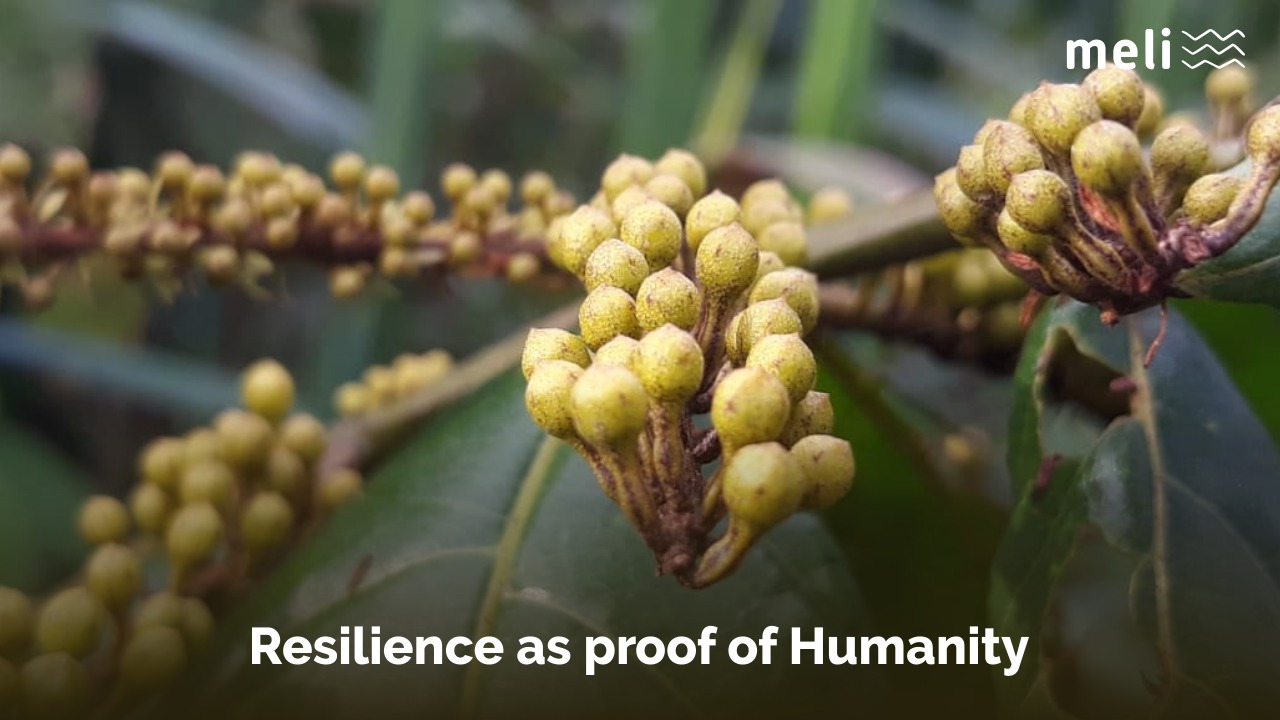What indigenous peoples can teach us about resilience: The case of Araribóia.
By Carlos Travassos, indigenous activist. Previously shared here.
Leia em português. Auf deutsch lesen.
Author: Carlos Travassos
The year 2020 started off with heavy rain in the Indigenous Territory of Araribóia, in the Amazon Region of the Federal State of Maranhão, amidst the silence of mourning following the death of Paulo Paulino Guajajara, Guardian of the Forest, who had been ambushed and killed by intruders on his territory. Even during the rigours of the Amazonian winter, between the thunderclaps of Tupã (Father of the Universe), the noise of the chainsaw violated once again the silence and the mourning.
In the middle of the Indigenous Territory, along the River Cerozal, the villages of the Guajajara exist in proximity with isolated indigenous groups from the Awá Guajá ethnic community. The people live in what remains of an area of virgin forest where the trees are hundreds of years old and where there are species of fauna and flora that are threatened with extinction. The Awá Guajá themselves are considered by international organizations like Survival International to be one of the ethnic groups that are most at risk worldwide.
The virgin forest in the Indigenous Territory does not have much value for those people who set out to rob it of its assets. But it has a great deal of value for those who buy it and sell it. And it is of incalculable value for the Awá and for the Guardians of the Forest. In Lagoa Comprida the buzzing of the chainsaw conveys the trauma caused by the murders of those involved in the resistance to the deforestation, a resistance powered by the culture of the Tentehar, the self-designation of the Guajajara people and of the Tembé people.
It is a difficult task to expose the close presence of the chainsaws: inaccessible roads and non-functioning internet connections. Major bureaucratic hurdles need to be overcome in order to institute legal proceedings: Photographs have to be submitted, as well as geographical coordinates, substantiated information and everything else. Furthermore, the response to the submission of a complaint does not come from the State but from the Guardians of the Forest, who pursue the strategy of pulling down the bridges that cross the River Buriticupu, which connects this extremity of the territory with the mid-point of the forest that belongs to the Awá Guajá. However, following these actions in February 2020, the entire social network of the surrounding population turned against the indigenous people.
The price of the struggle for the rainforest involves the fear of death and the curtailment of freedom. Doubt as to whether all of this is worthwhile torments every leader who is fighting for their territory. The son of a Guardian of the Forest was pursued while visiting the market in a neighbouring village: He was surrounded, humiliated and threatened with firearms. Following a threatening message, the woodcutters built a new bridge on the site of the previous one and large numbers of them arrived there in several trucks. After the woodcutters had left the indigenous territory, the Guardians of the Forest once again destroyed the bridge, which was then rebuilt during the next few weeks. The Guardians of the Forest demolished it yet again, but this time the trucks had remained in the territory. The system of organized crime relating to timber exploitation includes very well-functioning logistics, and the trucks were eventually towed away by tractors brought from the village.
During the course of February and March, with the coming and going of timber theft and the destruction and reconstruction of bridges, the isolated Awá Guajá, who were already experiencing the destruction of the most well-conserved area of their territory, did something unusual: They blocked one of the roads that had been opened by the woodcutters, by means of pieces of timber with lianas attached to them. The woodcutters had to call for a tractor in order to clear the road and allow the truck to pass. The message announcing the action had been issued by the isolated indigenous activists at the end of the woodcutters’ road, 28 kilometres from the start of the road and six kilometres from the village of Lagoa Comprida, from where the sound of the chainsaws felling the trees could be heard.
In April, when the pandemic was spreading unhindered and was reaching not only the villages of the Guajajara but also the indigenous population of the whole of Brazil, the Awá Guajá were seen in the vicinity by the indigenous people of Lagoa Comprida. Even after being caught trespassing, the Awá did not retreat from the location but remained camped there for several weeks. The Funai (National Indian Foundation) was called upon to act but did not go to visit the locality. On 16th May, out of curiosity, some of the Guajajara went to see what the isolated indigenous people were doing. On entering their encampment, one of the Guajajara was struck by an arrow. The tip of the Awá arrow, with a length of 30 centimetres, caused the victim to suffer a fractured collarbone. He fled from the location and survived. The Guajajara reacted with understanding but above all with concern. The questions posed by the Guajajara are: Why have the Awá set up their camp in the vicinity of our place of residence? Why do they react violently when someone approaches them? Could it be that there has been a quarrel between them and the woodcutters?
In the fateful year of 2020, the astonishment caused by this change in behaviour was also felt by the “sertanista” (an expert in the traditional knowledge of the rainforest and its inhabitants) who was working for Funai and who for several decades had been responsible for the protection of groups of isolated Indians from the Tupí linguistic branch in the north-west of the Federal State of Rondônia, on the indigenous territory Uru-eu-wau-wau. The isolated indigenous people, who had always resided in the centre of their territory, started to frequent the borders of their territory and, once they had crossed these borders, trespassed more than once on the properties of the neighbouring settlers. On 9th September, when he went to investigate one of these incidents at the request of the residents, Rieli Franciscato was caught by surprise and was struck fatally by an arrow to the heart. The “sertanista” was one of the greatest experts in the field of contemporary indigenous research, and with him there died a part of a Funai that was committed to the protection of the isolated peoples.
The then Minister of the Environment consistently helped to allow the herds of cattle to penetrate the forests of the Brazilian Amazon and the territories of the isolated Indians. Even in Federal States like Maranhão, where the government takes a critical stance towards the environmental policies of the Federal Government, the portfolio for environmental protection was granted to political coalitions in the election year, and this most definitely resulted in the weakening of environmental monitoring. At Ibama (Brazilian Institute of Environment and Renewable Natural Resources) the previous supervisory body was replaced, something which also happened in other parts of the Amazon region. And also at Funai, the official posts were taken over by people who did not fit into the customary category of personnel, who did not have any experience in the field, and whose manner of working was consequently inept and irresponsible. Therefore, in the Brazilian government, this represents the actual situation of environmental policy and protection of the indigenous peoples and their territories.
Now, in October 2020, a year has passed since the murder of Paulo Paulino Guajajara and no-one has yet been arrested for the crime. In Brazil, impunity is the rule for the murderers of protectors of human rights and environmentalists.
The penetration of woodcutters, gold prospectors and others into the indigenous territories considerably aggravates the spread of Covid-19 among the peoples living there. And among these peoples, those who have only recently been contacted and the isolated groups are the most vulnerable. The STF (Federal Supreme Court) opened the Action for breach of fundamental precept, No. 709, following the instituting of legal proceedings against the Brazilian Federal Government by APIB (Articulation of Indigenous Peoples of Brazil) and by other authorities – owing to its failure to act to protect the health and the territories of the isolated and recently contacted indigenous ethnic groups and of other indigenous ethnic groups and owing to the resulting spread of the pandemic to these ethnic groups. In spite of this exemplary procedure by the Supreme Court, the second wave of the pandemic once again reached the indigenous territories without any hard-hitting verdict having being issued. In other words, the Federal Government showed itself to be in complete disregard of the declarations made by Minister Barroso.
With the onset of every new decade, the resilient presence of isolated indigenous peoples supplies new and unexpected concepts of the real meaning of resilience. If, on the one hand, the herds of cattle directed by Ricardo Salles forbid us from making any optimistic forecast as regards the risks of extinction to which the indigenous peoples are exposed (for after all, how many isolated groups have already fallen victim to extermination in our recent past – due to diseases, violence and usurpation of their territories?) it may be, on the other hand, that the year 2021 will also be a year in which all of the peoples on this Planet look with anxiety upon the devastation of the Amazon and perceive among the indigenous peoples the hope that there will be a future not just for them but for all of us.
Your donation can have a positive impact on the world!
Subscribe to receive our Newsletter!
Find us also at Linkedin, Facebook, Twitter or Instagram
www.meli-bees.org
❤️


2 Replies to “Resilience as proof of humanity”